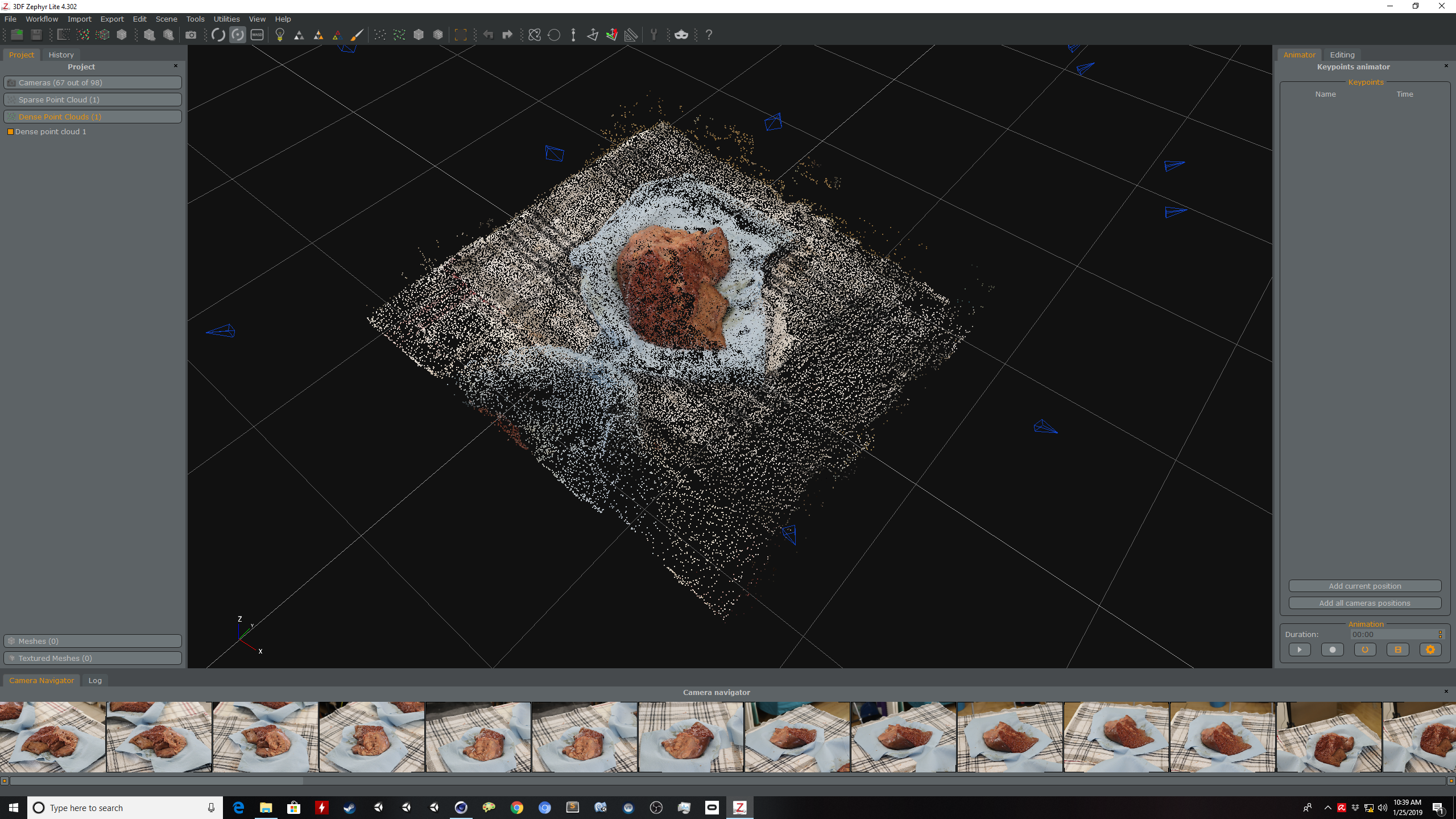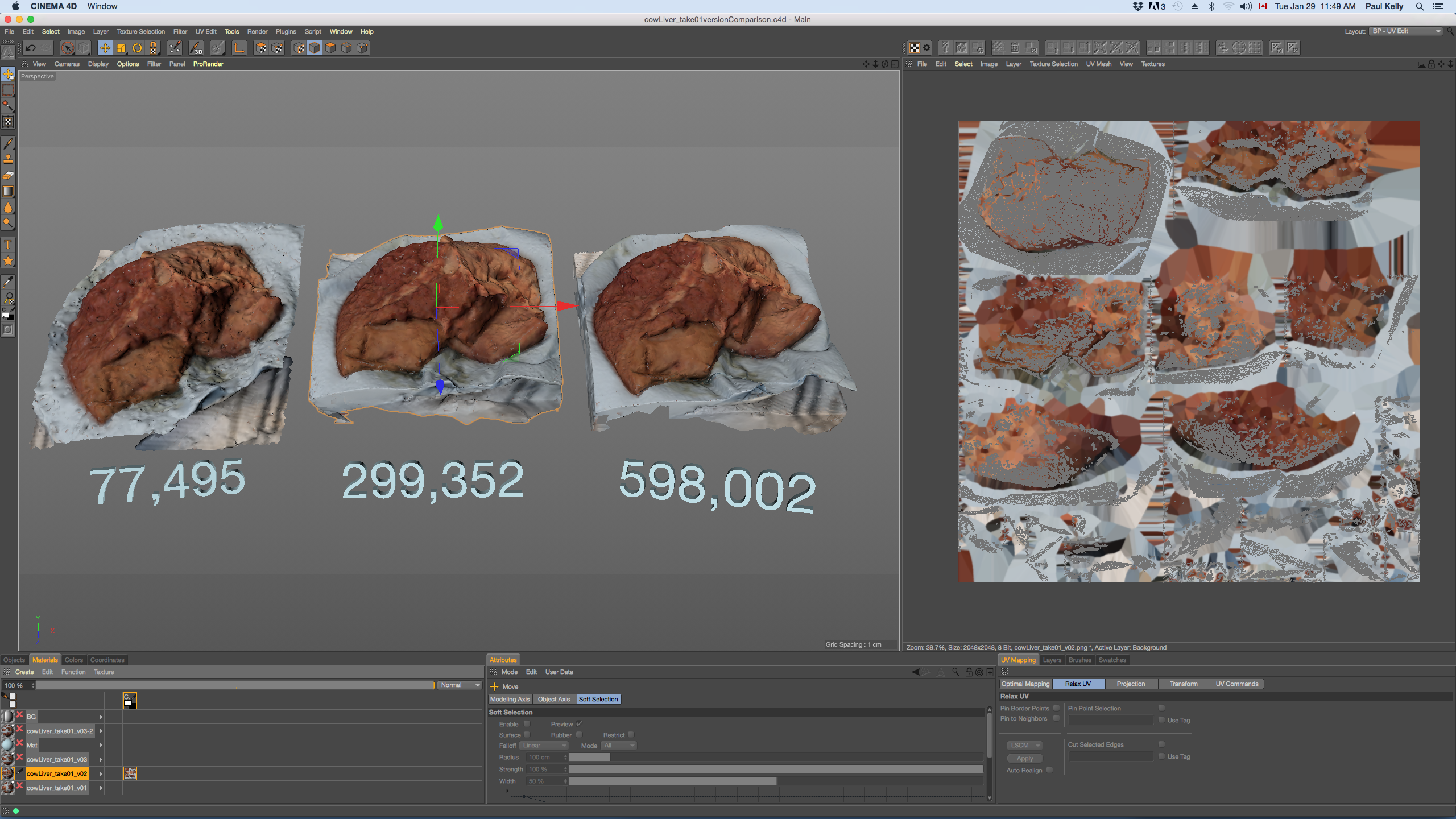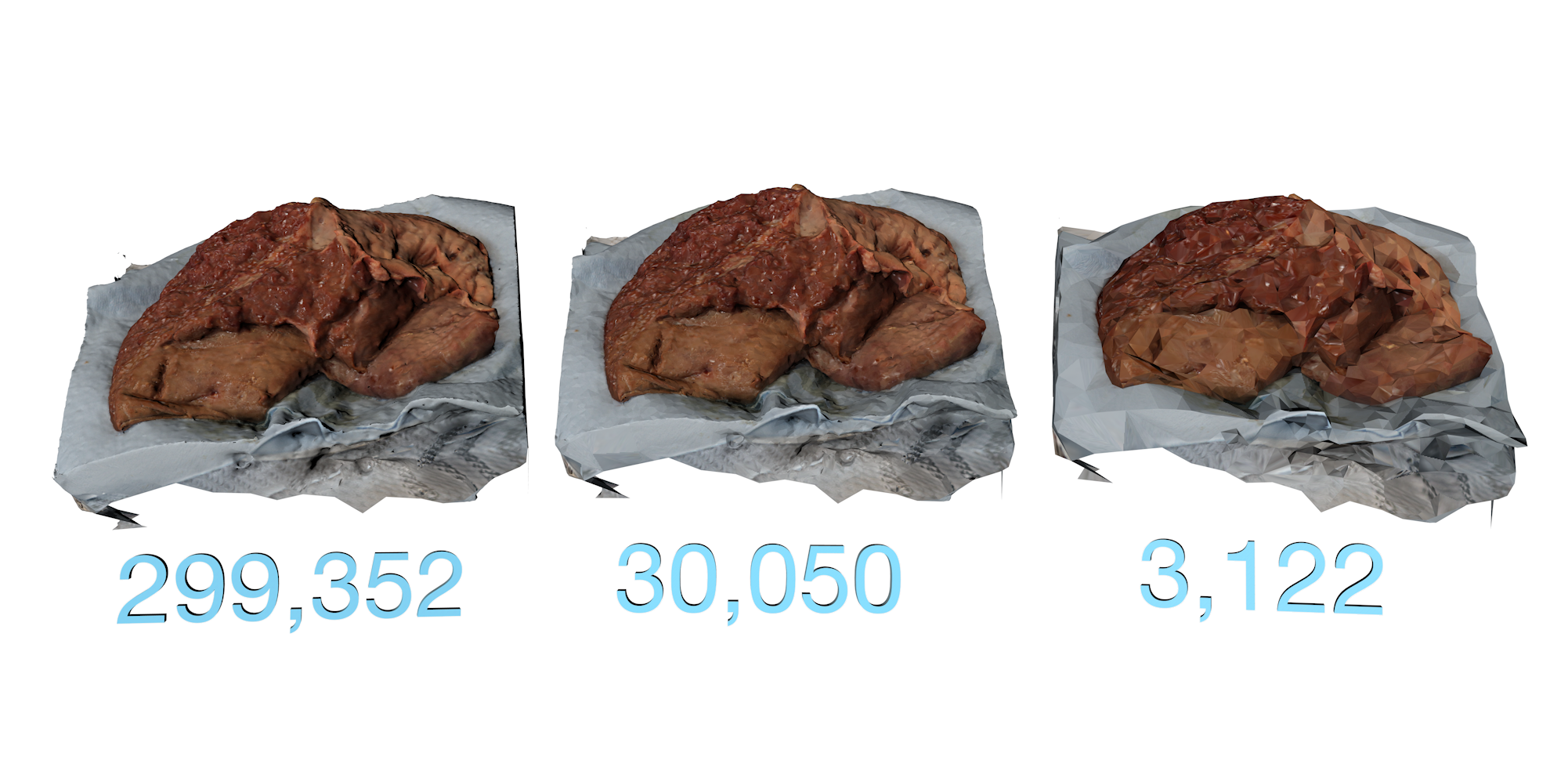Last month we shared a video of our attempt at a right hepatectomy of a cow's liver we acquired from a local butcher shop. Following our transection of the liver along a major hepatic vein we identified, we used the remaining liver specimen for our on-going research into photogrammetry for use in surgical education.

This month we'd like to discuss some of the technical considerations in producing, processing, and sharing the 3D model reconstructions produced by our photogrammetry software. After experimenting with several of the most popular applications available, we've settled on using 3DFlow Zephyr for our workflow, because we've found it to produce the best results for the organic subjects we've been focused on.

Here we see three different versions of photogrammetry reconstructions made in 3DFlow Zephyr, imported into our animation software, Cinema4D. These three models were produced from the same set of photographs, but using three different quality settings in 3DFZ, from lowest to highest moving from left to right. The numbers below each model tell you how many polygons make up the mesh of each reconstruction. As you can see, the number of polygons increases as you increase the quality settings in the photogrammetry software. Our goal for using the models in animation and online interactive viewing, is to get the polygon count down as low as possible. You can also see the UV texture map of the models represented on the right hand side of the UI.
[bs_image_comparison id='8968']
Cinema4D and other 3D applications offer tools to reduce the number of polygons in a model in an automated way. In C4D we can use the "polygon reduction" object to reduce the poly count of a photogrammetry reconstruction. We've started with the medium-level quality model from the previous figure, and used the polygon reduction object to simplify the geometry of the mesh. Here we've reduced the polygon count from ~300k to ~30k.
[bs_image_comparison id='8969']
Using a display mode in C4D that shows polygon edges, we get a good sense of the reduced density of polygons as we increase the intensity of the polygon reduction. Here we've reduced the polygon count from ~30k to ~3k. As you can see, we reach a point where the reduction in geometry compromises the fidelity of the model, so there is a point of diminishing returns, and finding a happy medium is the goal of this stage of the process.

Rendering the image (calculating the lighting and applying the texture maps to the camera's view of the model) helps to reveal the quality we can retain in a model that has undergone a reduction in geometry. Here you can see there is little difference between the 300k and 30k models, whereas the low fidelity of the 3k model is apparent.
Here is an interactive upload of our photogrammetry-reconstructed transected cow liver:
We'll continue to explore the potential use of photogrammetry for surgical education. Let us know what you think and we'd be happy to discuss!
– TVASurg Team
